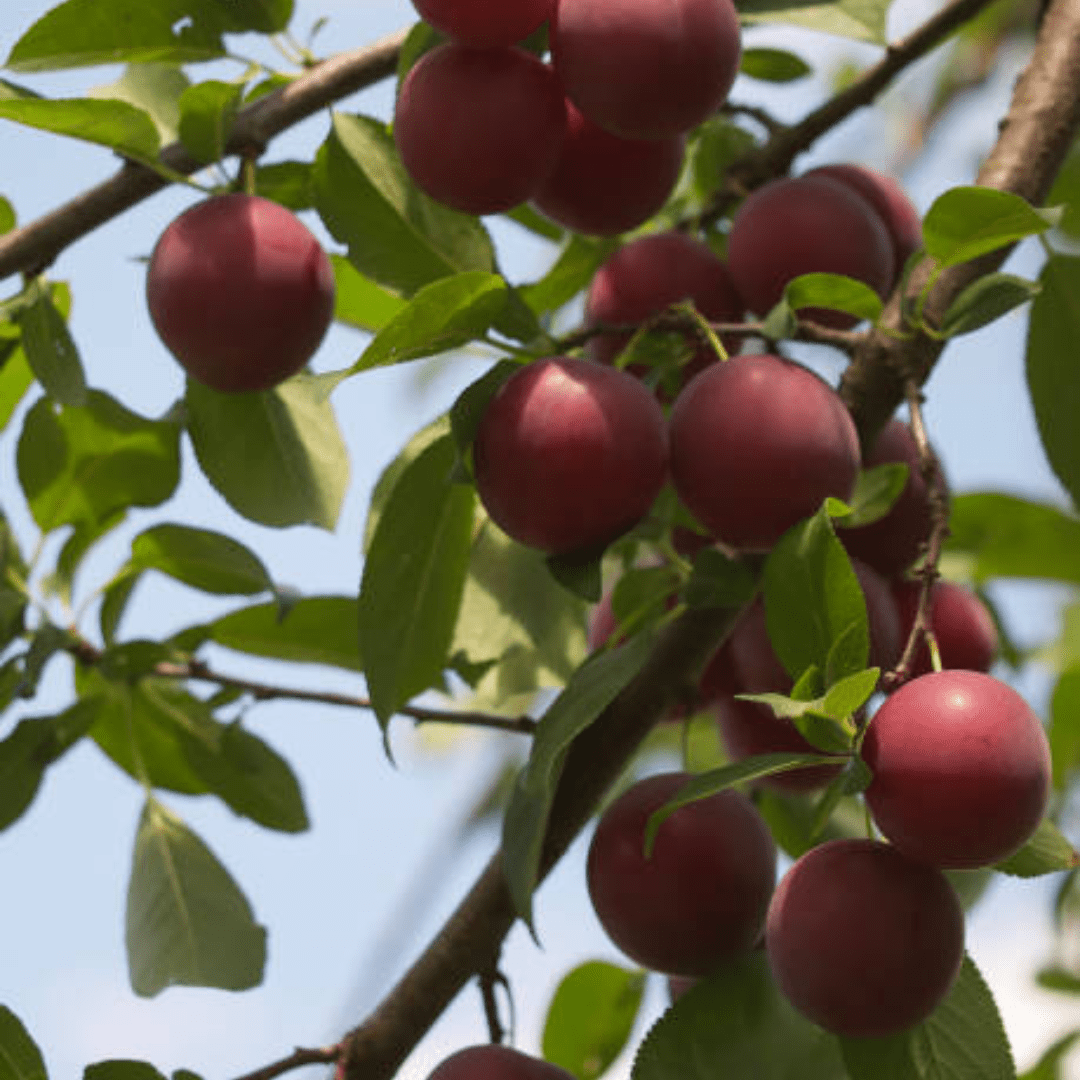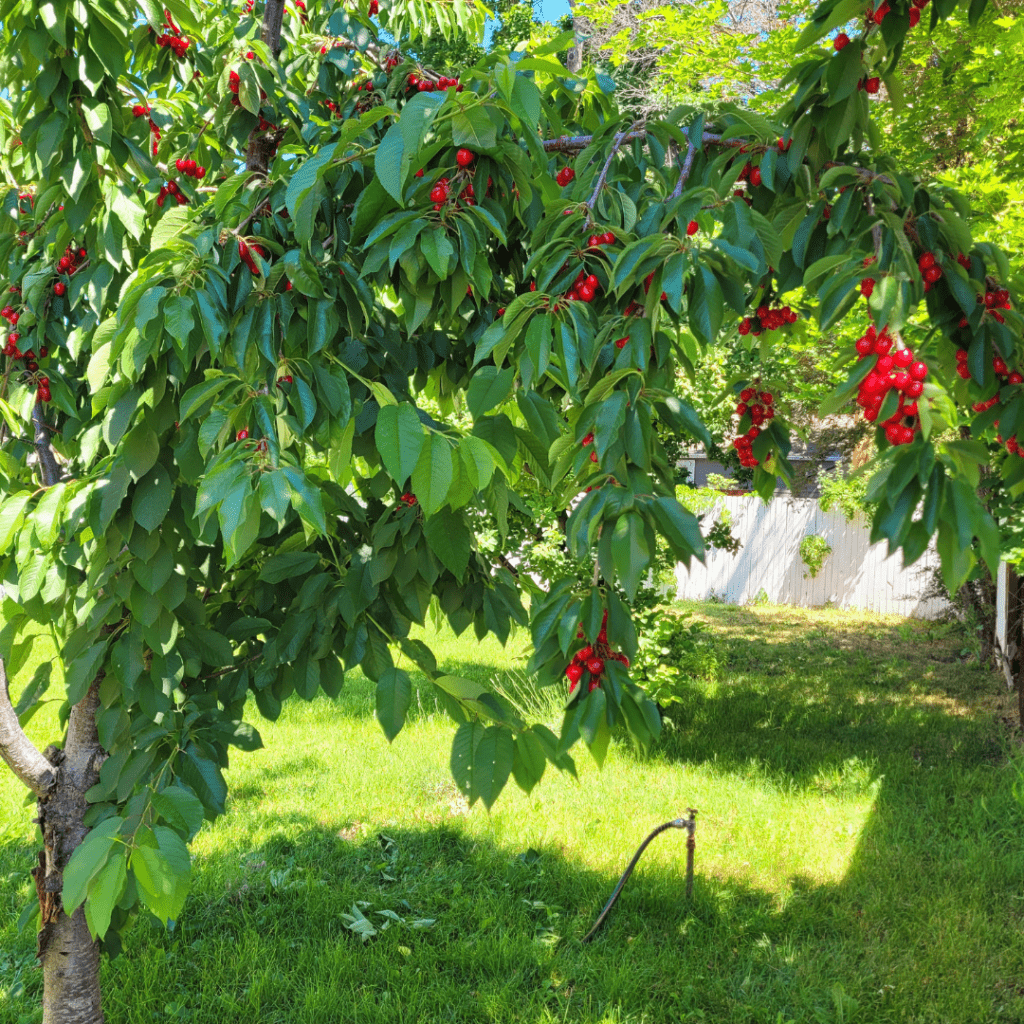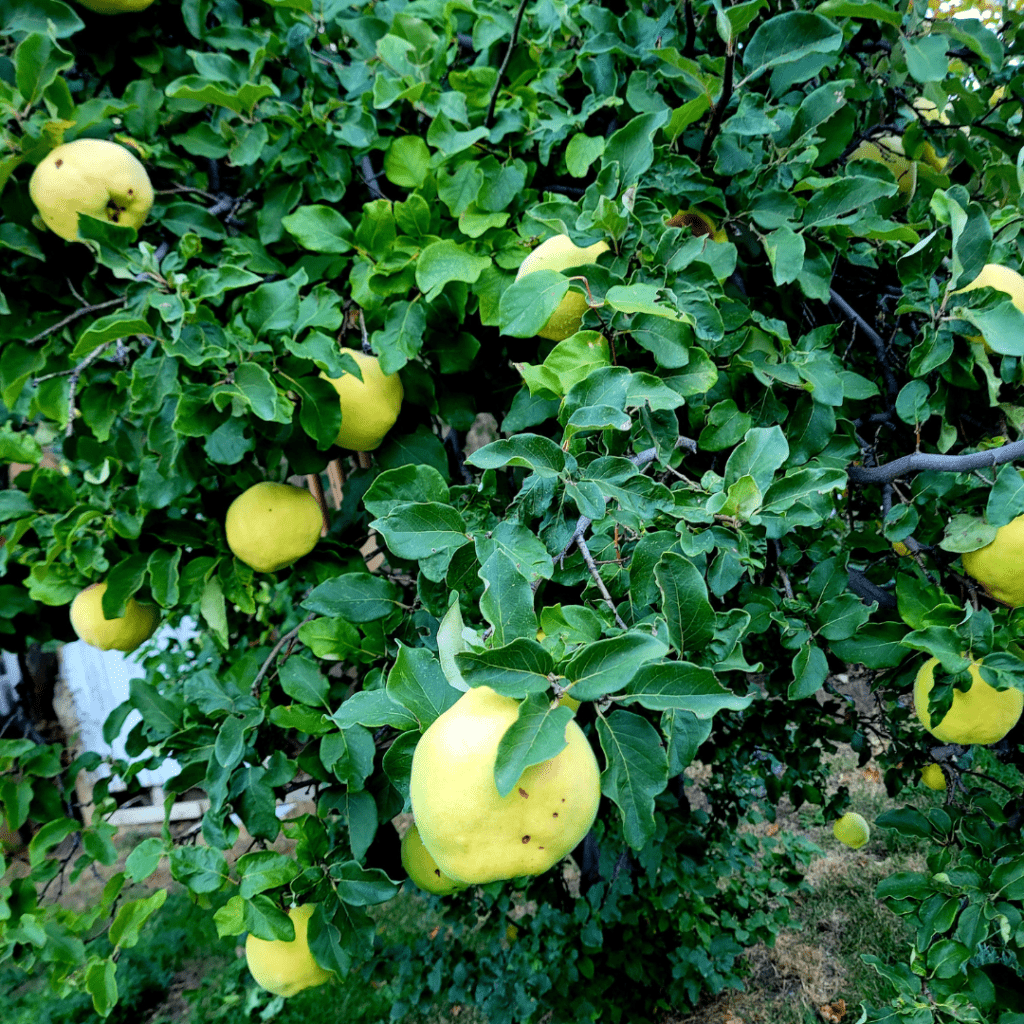Discover everything you need to know about cherry plum trees in this ultimate guide! From planting and growing tips to pruning, harvesting, and enjoying the sweet-tart fruit, I cover it all. Learn the difference between cherry plums and other stone fruits, ideal growing zones, and how to care for your tree year-round. Perfect for home gardeners, homesteaders, and fruit lovers alike!
Welcome to the ultimate guide on cherry plum trees! These delightful trees blend ornamental beauty with practical fruit production, making them a favorite among garden enthusiasts. Whether you’re attracted by their spring bloom, the tasty fruits they bear, or their compact size, fitting for any yard, cherry plums have something to offer for everyone.
In this guide, I’ll be discussing their origins, varieties, and care tips, plus how you can make the most of their fruits. Perfect for both gardening novices and seasoned pros, let’s explore the charming world of cherry plum trees together!
This is a pinnable post. Tap or hover over any image in this post to pin to your Pinterest Boards.
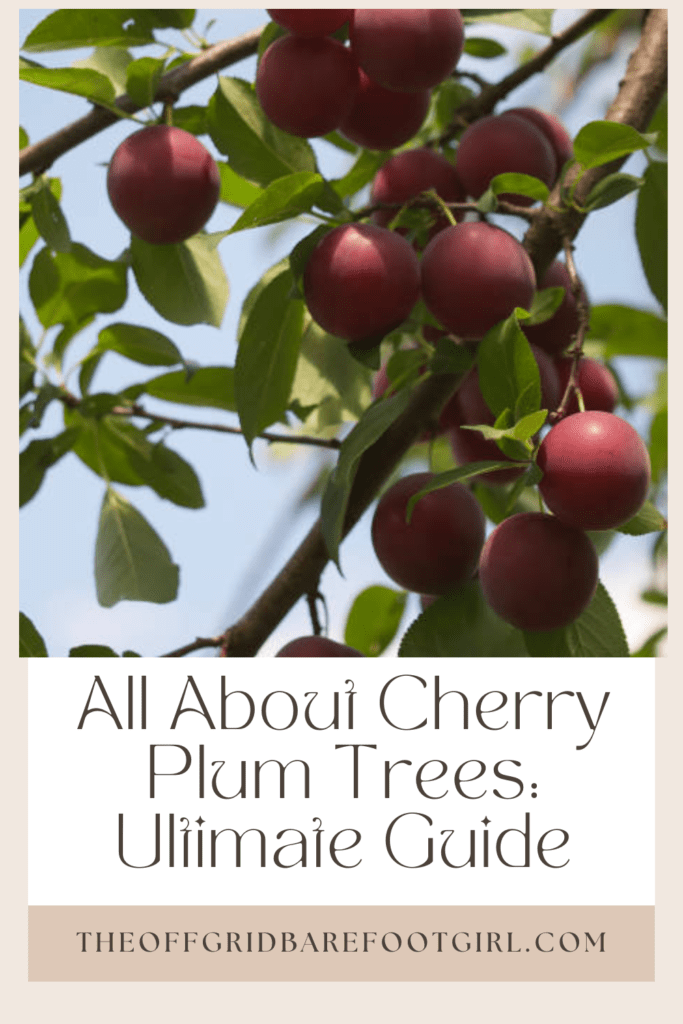
What I Love About My 2 Cherry Plum Trees!
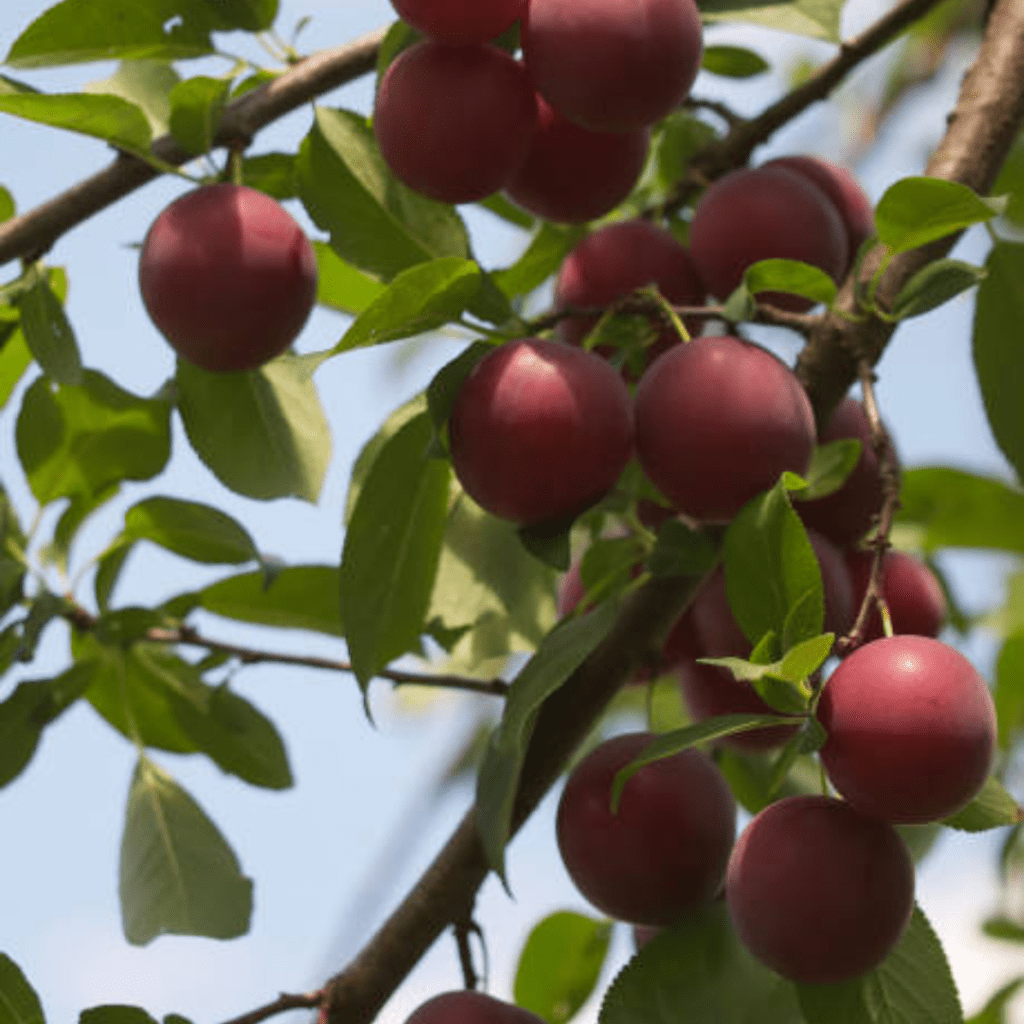
I absolutely love my cherry plum trees for their stunning beauty and the delightful bounty they provide each year. In spring, they burst into a profusion of delicate, fragrant blossoms, creating a picturesque scene in my garden. As the seasons progress, these blossoms give way to an abundance of small, vibrant fruits that are not only delicious but also incredibly versatile, perfect for fresh eating, preserves, and baking.
The trees themselves are hardy and resilient, requiring minimal maintenance while offering so much in return. Watching them thrive and knowing they are a sustainable source of homegrown fruit brings me immense joy and satisfaction!
History and Origins of Cherry Plum Trees
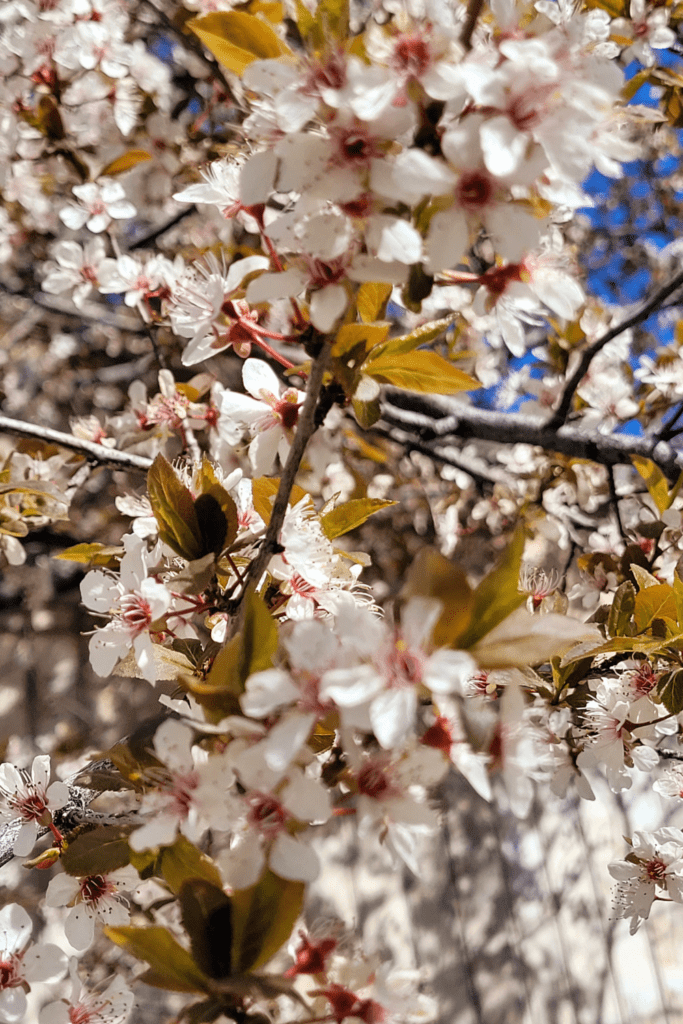
The cherry plum tree, often a backdrop in verdant landscapes, has a rich history that’s as colorful as its fruits. Originating from Southeast Europe and Western Asia, these trees are ancient cultivars, possibly first grown by the Romans.
Ancient civilizations enjoyed the same ruby-red or golden-yellow fruits that we relish today. It’s fascinating to think about how these trees traveled through continents, finding homes in gardens and wild landscapes alike. They’re not just plants; they’re living history, connecting us to past cultures and environments. With each blossom and fruit, cherry plum trees continue to weave their storied past into our present gardens and orchards.
The Difference Between Cherry Plums and Other Stone Fruits
Cherry plums may look like miniature plums or oversized cherries, but they’re a unique stone fruit all their own. Unlike typical cherries, cherry plums have a tart, tangy flavor with a firmer flesh and larger pit. Compared to standard plums, they ripen earlier, are usually smaller in size, and often have a slightly more acidic bite. Their compact size, vibrant color, and early fruiting make them a favorite for home orchards and edible landscaping. Knowing these differences can help you choose the right tree for your garden and better enjoy the fruit it produces.
Varieties of Cherry Plum Trees
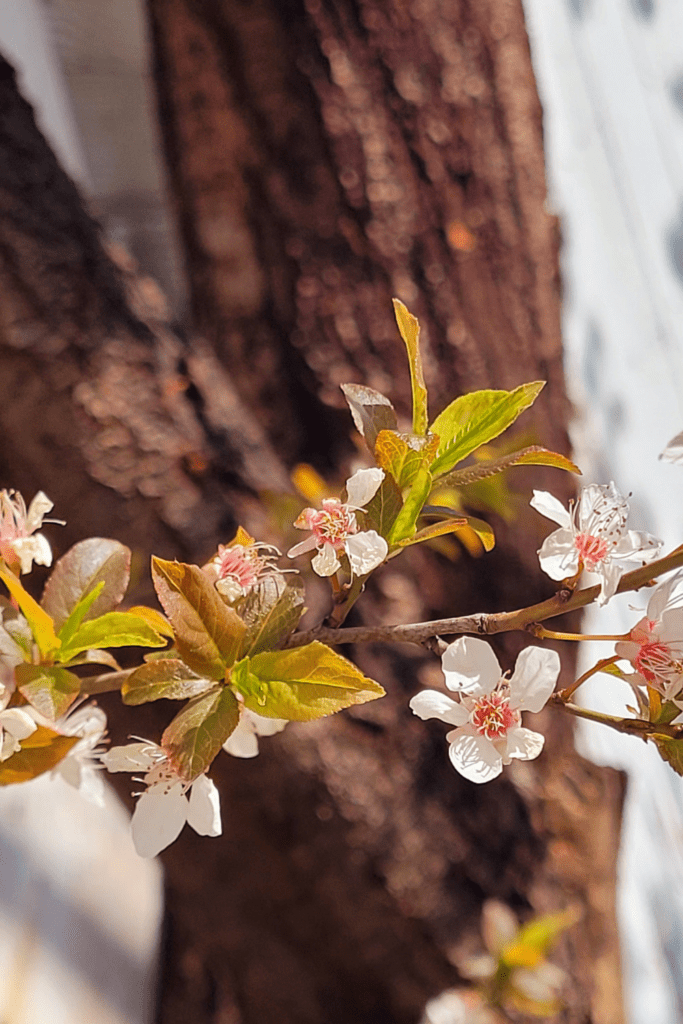
Exploring the world of cherry plums, you’ll find it’s much like a treasure trove of diversity. Among them, a few stars shine the brightest.
- Myrobalan: Myrobalan is the classic, known for its vigor and bountiful harvest. It sets the gold standard with its sweet, ruby fruits.
- Atropurpurea: Then we have Atropurpurea, a beauty queen with deep purple leaves, making it as much an ornamental delight as a fruitful bounty.
- Nigra: For smaller gardens, Nigra fits perfectly, compact, and generous with its dark, luscious fruits, which are the kind that I have grown in my garden.
Each variety brings its unique twist to the table, from the aesthetics of its blossoms to the tang of their fruits. It’s a garden adventure waiting to unfold, with each choice shaping the landscape and the palate in its special way.
Planting and Caring for Cherry Plum Trees
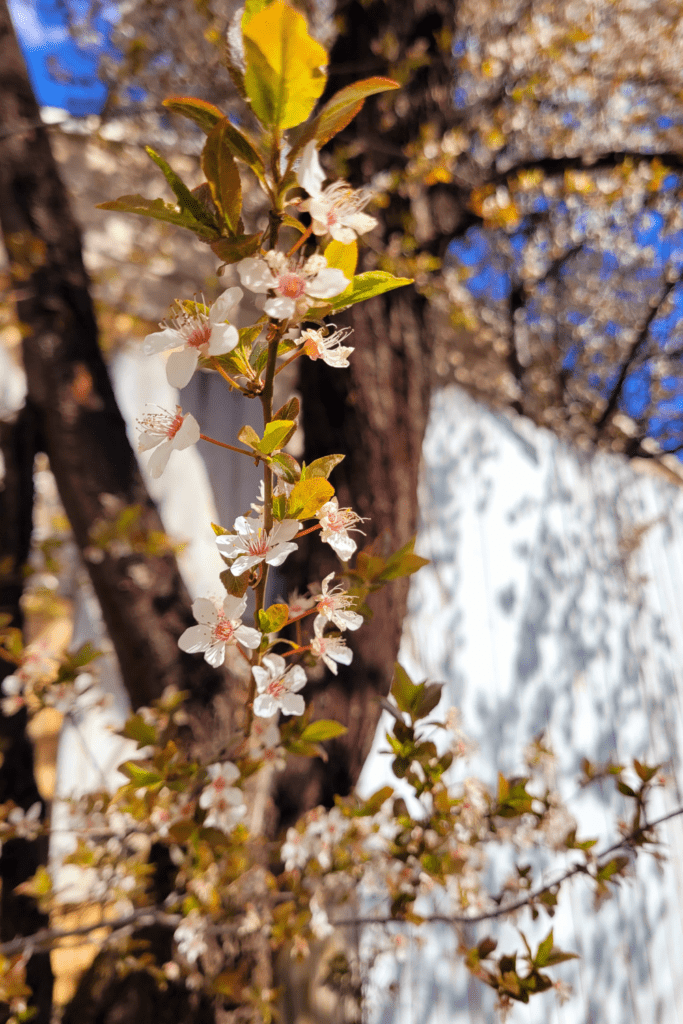
Planting and caring for cherry plum trees involves several steps to ensure healthy growth and bountiful fruit production. With proper care, cherry plum trees can provide beautiful blossoms in the spring and delicious fruit in the summer. Let’s go over some helpful tips.
Choosing the Right Spot
First, your cherry plum wants to bask in the sunshine. Choose a sunny spot, ensuring it gets at least 6 hours of direct sunlight a day. It also likes well-draining soil, so avoid areas where water tends to pool.
Planting Time
Spring or fall? Both are great! Cooler months are the cherry plum’s favorite time to settle into its new home, avoiding the stress of summer heat.
Water Wisdom
After planting, keep the soil moist, but not soggy. Regular watering helps, especially during the first few years when it’s established. Once mature, your cherry plum will be more drought-tolerant.
Feeding and Pruning
Feed it some balanced fertilizer come spring to kickstart growth. Pruning? Do it during winter dormancy. Just remove any dead or overcrowded branches to help sunlight reach the tree’s interior.
Remember, a little love goes a long way with cherry plum trees. They’ll reward you with beauty and bounty for years to come.
Common Pests and Diseases of Cherry Plum Trees
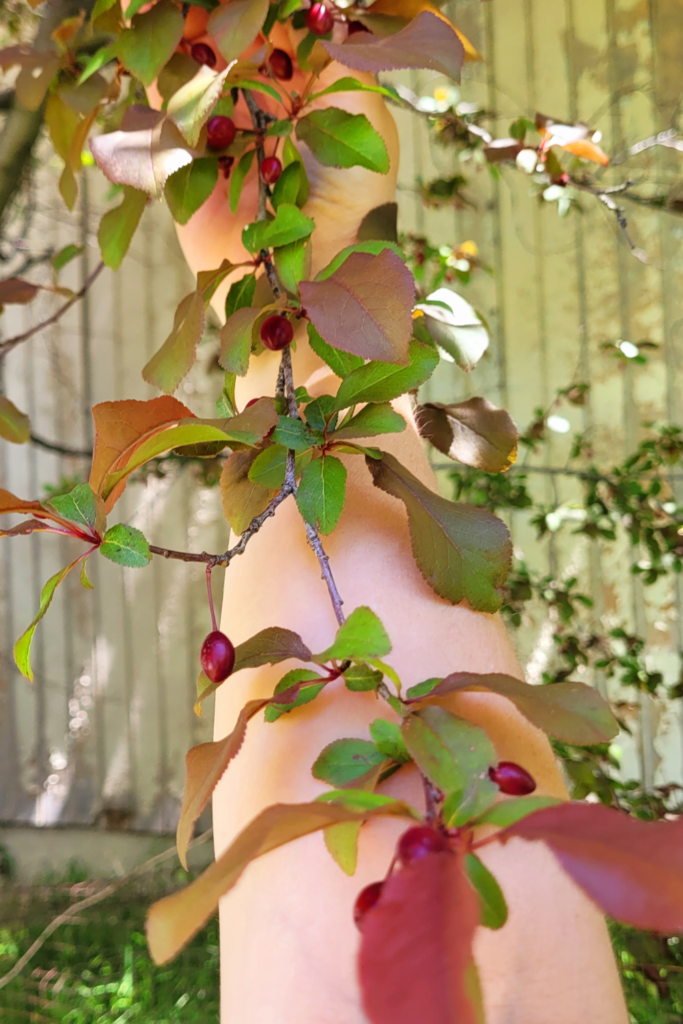
Keeping your cherry plum trees healthy means being on the lookout for pests and diseases. A few unwelcome visitors include:
- Aphids: Tiny pests that can cause leaves to curl and weaken the tree. A blast of water or natural predators like ladybugs can help keep them in check.
- Bacterial Canker: This disease causes dark, sunken spots on branches and trunks. Pruning infected areas in dry weather can prevent their spread.
- Plum Pocket: A fungal disease that inflates fruits into balloon-like structures. Removing affected fruits and utilizing fungicides early in the season can help control it.
Giving your cherry plums the right care and promptly addressing these issues can ensure your tree remains a healthy and thriving part of your garden.
Addressing Poor Fruit Production of Cherry Plum Trees
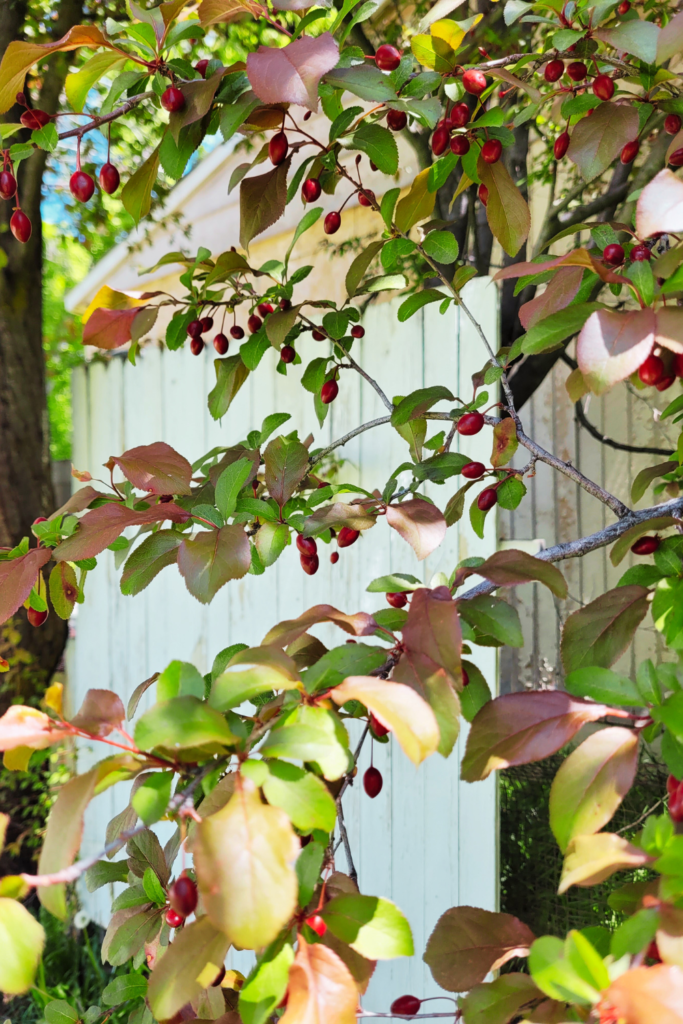
Addressing poor fruit production in cherry plum trees requires a multifaceted approach to identify and rectify potential issues.
- First, ensure that the tree is receiving adequate sunlight, as insufficient light can significantly reduce fruit yield.
- Regularly check the soil for proper drainage and nutrient levels; amending the soil with organic compost can enhance fertility.
- Over or underwatering can stress the tree, so maintain a consistent watering schedule, especially during dry periods.
- Pruning is also crucial; remove any dead or overcrowded branches in late winter or early spring to improve airflow and light penetration.
- Additionally, cherry plum trees require cross-pollination from compatible varieties, so ensure that pollinator trees are present nearby.
- Pests and diseases can further impair fruit production, so monitor the tree regularly and use appropriate treatments as needed.
- Finally, apply a balanced fertilizer in early spring to support healthy growth and fruit development.
By addressing these factors, you can enhance the fruit production of your cherry plum tree.
Harvesting and Using Cherry Plums
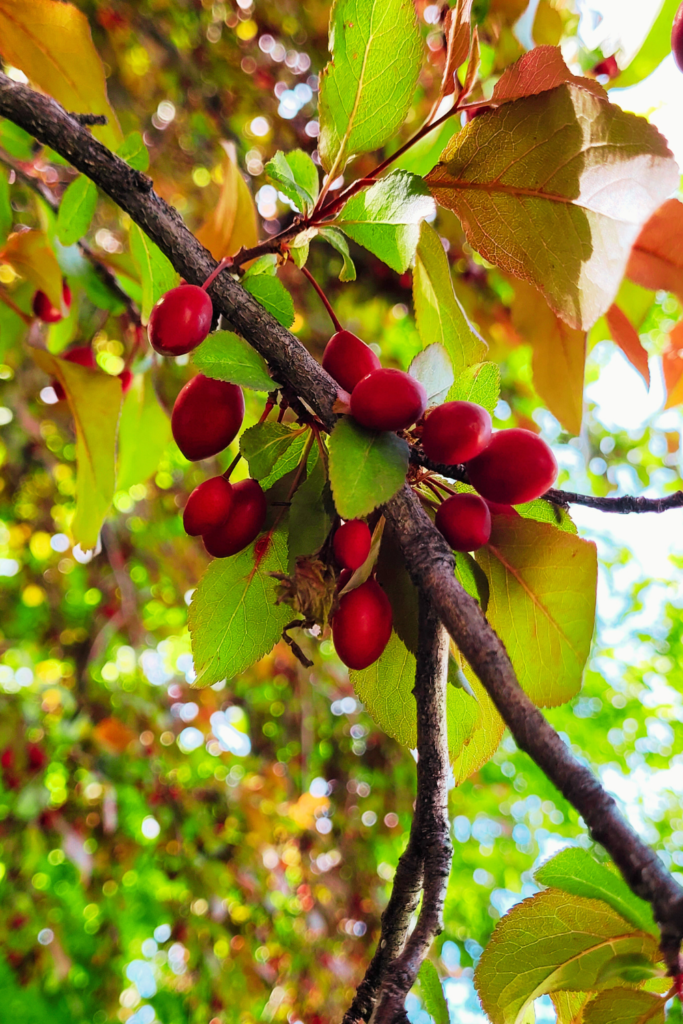
Harvesting Cherry Plums
Just know that harvesting cherry plums is a delight. As summer wanes, these small, jewel-like fruits ripen, bursting with flavor. The right time to pick them is when they’re fully colored and slightly soft to the touch. It’s a simple joy, plucking them gently from the branches, with the anticipation of the treats you can create.
Using Cherry Plums
Using cherry plums is where the fun really starts. They’re incredibly versatile. Think of homemade jams or jellies, their tartness blending perfectly with sugar. Or perhaps a cherry plum pie, with its vibrant filling, is more to your taste? Even beyond desserts, cherry plums can be a tangy addition to salads or sauces, offering a burst of flavor that enhances any dish. Check out my cherry plum recipes here!
So, when the season comes, embrace the harvest. The possibilities with cherry plums are as limitless as your imagination.
Cherry Plum Trees in Landscaping
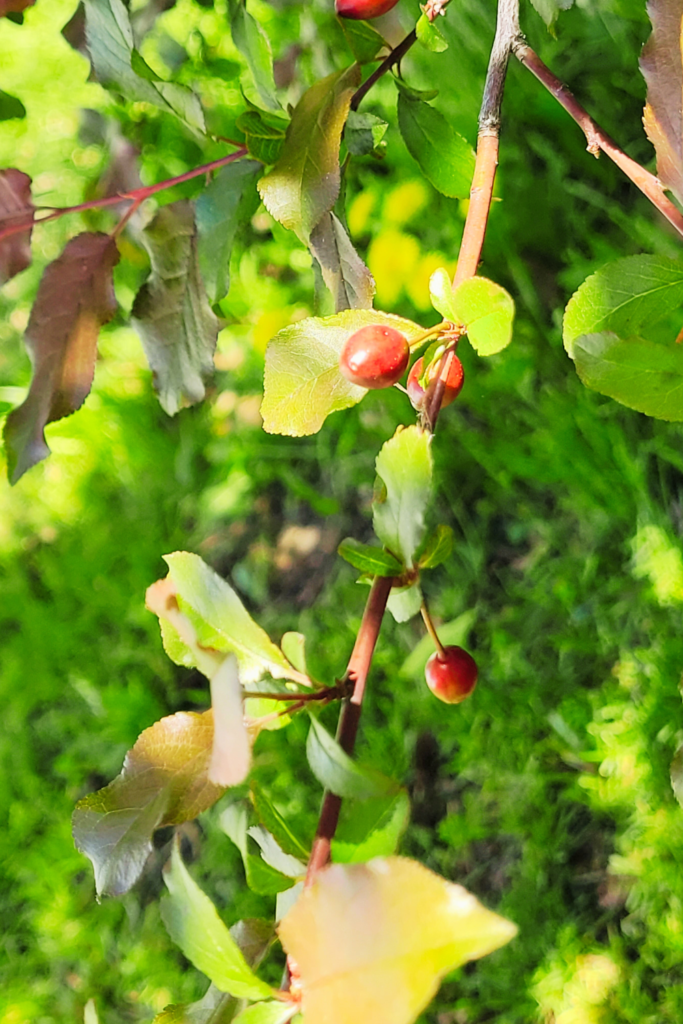
Cherry plum trees aren’t just for fruit lovers. These stunners can seriously up your landscaping game, too! A vibrant splash of pink and white blossoms each spring, quickly becoming your garden’s main attraction, makes for a beautiful sight. Not to mention, they’re pretty adaptable, thriving in a variety of soils and conditions.
But it’s not all about looks. Cherry plum trees are practical, too. They can serve as lovely privacy screens or windbreaks, offering both beauty and function. And let’s not forget the shade. On a scorching summer day, what’s better than lounging under the cool canopy of your cherry plum tree?
Whether you’re planning a garden revamp or starting from scratch, consider a cherry plum. It’s a choice that won’t disappoint.
Want More Fruit from Your Trees? Let Me Show You How

Companion planting is just the beginning. If you’re ready to build a thriving backyard orchard that feeds your family and nourishes your soil, you’ll love my book Harvesting Paradise: Your Guide to Growing a Backyard Orchard. Inside, I share everything I’ve learned—step by barefoot step—about planting, pruning, and creating an off-grid oasis filled with apples, pears, cherries, and more. Grab your copy and start turning your land into a self-sufficient fruit haven today!
Get your copy!
Harvesting Paradise: Your Guide To Growing a Backyard Orchard
Conclusion
In wrapping up our comprehensive journey through the world of Cherry Plum Trees, it’s clear these beauties are more than just a pretty sight. From their rich history and diverse varieties to the joys and challenges of cultivation, cherry plums offer a sweet blend of ornamental appeal and practical bounty.
Whether you’re considering them for your garden for their delightful spring blossoms, for the delicious fruits, or for their landscape value, cherry plum trees promise to enrich your space and gardening experience. Here’s to growing your own and enjoying the multitude of benefits these charming trees provide!
Resources: Here are some helpful resources for further information.
- Cherry Plums – By A Food Forest In Your Garden
- How to Grow and Care for Cherry Plum Tree – By Chefd
- Delight Cherry Plum – By One Green World

Frequently Asked Questions
1. What are the ideal growing conditions for cherry plum trees?
Cherry plum trees thrive in well-drained soil with full sun exposure. They prefer slightly acidic to neutral pH levels (6.0-7.0). These trees are hardy and can tolerate a range of soil types, but do best in fertile, loamy soil. Regular watering is essential, especially during dry spells, to establish a strong root system.
2. How do I plant a cherry plum tree?
To plant a cherry plum tree, choose a location with full sun and well-drained soil. Dig a hole twice as wide and as deep as the root ball. Place the tree in the hole, making sure the root collar is level with the ground surface. Backfill with soil, water thoroughly, and apply mulch around the base to retain moisture. Space multiple trees at least 15-20 feet apart to allow for proper growth.
3. When and how should I prune my cherry plum tree?
Prune cherry plum trees during late winter or early spring while the tree is still dormant. Remove any dead, diseased, or crossing branches to improve air circulation and light penetration. Shape the tree by cutting back any overly long branches and maintaining an open center. Regular pruning helps promote healthy growth and a higher yield of fruit.
4. What pests and diseases commonly affect cherry plum trees?
Cherry plum trees can be affected by various pests and diseases, including aphids, plum curculio, and bacterial canker. To manage pests, use insecticidal soap or neem oil as needed. For diseases, ensure proper tree spacing and pruning to improve air circulation, and remove any affected parts promptly. Regular monitoring and maintaining tree health through proper care can significantly reduce the risk of infestations and infections.
Summary
I hope I have inspired you to grow your own backyard orchard.
If you were encouraged by this post, I invite you to check out my FREE Printables Page for fun free printables, planners, and charts.
ENTER MY FREE Printables Page HERE
I invite you to check out some more of my posts!
How Persimmon Fruit Trees Can Change Your Life! Unbelievable!
How to Design Your Backyard Orchard for Maximum Yield
How to Grow a Sustainable Backyard Orchard
Surprising Benefits of Growing Garlic Around Your Fruit Trees
How to Can a Year’s Supply of Quince Jam
Pears: All About Pear Trees: Ultimate Guide
Cherries: All About Cherry Trees: Ultimate Guide
Quince: All About Quince Trees: Ultimate Guide
Apples: All About Apple Trees: Ultimate Guide
How to Grow a Productive Perennial Raspberry Patch
Why You Need to Start Micro-Orcharding in Your Backyard
How to Grow a Productive Perennial Strawberry Patch
Blessings,
The Off Grid Barefoot Girl

